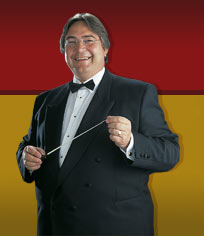Ask any top-class player what is the most important facet of brass playing is and I’m sure the majority will say breathing. However, in my experience, it’s the first discipline we forget when we are under pressure.
When a new piece is given out at a rehearsal, everyone looks for the difficult rhythms, tricky fingerings, passages marked solo and the extreme high and low notes before any consideration is given to breathing. The fact is, good breathing will improve all the aspects listed above and also improve sound quality.
Good solid breathing should be built in to our playing at an early stage of development and should be inherent in everything we play. I’m not going to go into great technical depths about the function of breathing, to many players it means very little, so lets keep it simple! The common faults I’ve witnessed which directly affect breathing are:
Bad Posture…
The way we sit or stand to play our instruments. Bad posture in mature players is usually a symptom of boredom or laziness and manifests itself in slouching in rehearsal and holding one’s instrument in the most convenient and comfortable position. Bad posture in young players is usually a product of poor teaching, lack of physical strength to hold the instrument correctly or not adjusting posture as the young player grows with age.
Overly Dramatic Intake…
Lifting the shoulders and the chest and making a noise when inhaling. It might look ‘macho’ to excessively lift the upper body when breathing, but it is to be discouraged as much as possible because it creates tension and constricts air flow. The noisy breath has ruined many an atmospheric moment in performance and destroyed countless recording sessions.
When I teach my students I try to keep all aspects of brass playing as simple as possible. With regard to breathing my main rules are:
• Relax when taking a breath.
• Keep the shoulders and chest down when inhaling (the chest lifts a bit at the end of the breath).
• Inhale using the syllable ‘aw’ (the noisy breather uses ‘ee’).
• Imagine your lungs are a little lower than they actually are.
• I find that good posture for most instruments (Basses excluded) can best be found in the standing position. Feet inline with shoulders, and arms set to about ‘twenty past eight’. These positions should be kept when in the sitting position. If in doubt copy a professional!
Below are some breathing exercises I use.
• Breathe in and out over eight counts, three or four times. Gradually, over a period of time increase the count to thirty-two.
• Hold a piece of A4 paper between finger & thumb in the centre at the top of the page at arms length. Over an eight beat count, blow the paper from its vertical resting position to the horizontal one. Repeat the exercise several times.
• When out for a leisurely stroll breath in between two lamp-posts then out between the next.
• Hold a piece of A4 paper against the wall at arms length. Simultaneously, let go of the paper and blow as hard as you can. Your breath should hold the paper against the wall for a few seconds!
© Robert Childs |
